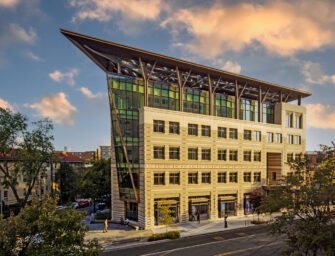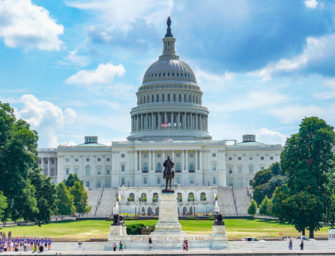Filling, and Sustaining, the STEM Pipeline
24 May 2012
From providing the basic knowledge about why natural hazards put society at risk to building a technological foundation for our economic competitiveness, we know that the work Earth and space scientists do plays a critical role in ensuring a sustainable future for our global society. Given that important role, it is no surprise that recent studies by the U.S. Bureau of Labor Statistics reveal a 23% rise in demand for geoscientists in professional, scientific, and technical sectors by 2018. That is why it is so important that we support a steady and stable pipeline of talented people who can meet the workforce demands of the future.
As an organization, AGU made a commitment to “building the global talent pool in Earth and space science” by identifying it as one of the four goals in our strategic plan. In supporting that commitment, AGU offers an assortment of opportunities for students, teachers, and lifelong learners, including networking and mentoring opportunities, programming that strengthens the skills of instructors at all education levels, and activities designed to make Earth and space science fun and interesting for a variety of audiences. And with all of these programs, we strive to reach a broad array of groups—including those who are traditionally underrepresented—to ensure that the geoscience talent pool reflects our nation’s diverse population.
One example of this commitment is AGU’s work to secure an NSF grant that allowed us to lay the groundwork for a new program to support two-year college students who are pursuing Science, Technology, Engineering, and Math (STEM) degrees. Two-year colleges play a vitally important role in the higher education system in the U.S., but when it comes to STEM, many students from these institutions do not finish their degrees or succeed in transferring/completing programs at four-year colleges. AGU recognized that fixing this “leak” in the STEM pipeline was critical to our long-term success, which is how the idea for Unique Research Experiences for Two-Year College Faculty and Students (URECAS) was born. Work on this new effort has already begun, and a planning workshop will be held this summer. In this workshop we will bring together two-year college Earth and space science faculty with faculty from four-year programs who have successfully transitioned two-year college students. This work will help us to identify barriers to participation for both students and faculty, which will then allow us to begin defining a path toward implementation of a full program.
URECAS joins a long list of educational outreach programming offered by AGU. At the Fall Meeting, we host a training workshop for the heads and chairs of Earth and space science departments where they can discuss issues and strategies for building a strong department, network with their peers, and learn more about faculty diversity issues. We also host a Geophysical Information for Teachers (GIFT) workshop that provides middle and secondary school teachers with an opportunity to hear about the latest geoscience research and explore new classroom resources for their students.
For undergraduate and graduate students, we offer a variety of networking opportunities and career guidance workshops/training sessions, as well as an Academic Showcase that highlights institutions offering graduate degree programs in the Earth and space sciences. For middle and high school students currently participating in after-school and summer research experiences, we offer the Bright Students Training as Research Scientists (Bright STaRS) program. This program provides a dedicated forum for the participants to present their own research results to the scientific community during AGU’s Fall Meeting and to learn about exciting research, education, and career opportunities in the geosciences.
And in an effort to reach out to a more general public audience, we also host a family event called Exploration Station, which is designed to showcase AGU science and allow children and the public to participate in science-themed exhibits and hands-on activities and to listen to a lecture by an AGU scientist.
Outside of the Fall Meeting, we also participate in programs like the USA Science and Engineering Festival, a national event designed to “re-invigorate the interest of the nation’s youth STEM.” For this year’s event, which took place in Washington, D.C., April 28 and 29, AGU partnered with the Centers for Ocean Science Education Excellence (COSEE) on a booth that included a variety of hands-on activities and a poster about physical, biological, and chemical oceanography principles. Watch the video.
Of course, in all of these efforts we encourage our members to get involved, even those outside of the world of academia. Personally, I can tell you that my interaction with the students in the Bright STaRS program these last two years at the Fall Meeting was a highly rewarding experience. As we say in our vision statement, AGU galvanizes a community of Earth and space scientists that collaboratively advances and communicates science and its power to ensure a sustainable future. Fostering excellence in Earth and space science education plays a critical role in achieving that vision.
Mike McPhaden
President



There are no comments
Add yours